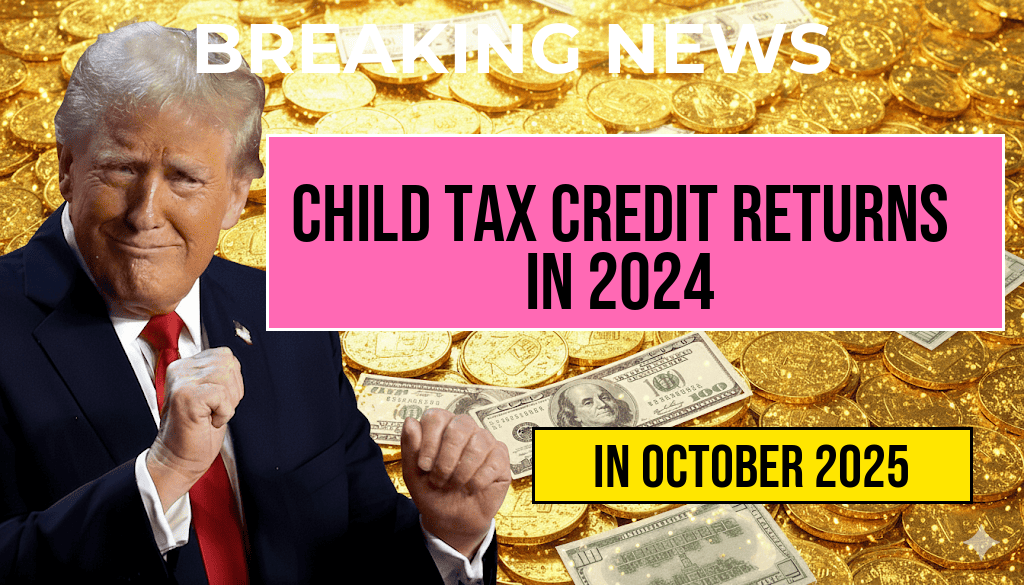The Child Tax Credit (CTC) has become a significant financial resource for many families across the United States, especially following recent enhancements aimed at reducing child poverty and supporting working parents. Under current provisions, eligible families could potentially receive a refund of up to $1,700 per qualifying child, beyond the standard tax benefits. This potential refund hinges on specific income levels, filing status, and other qualifying factors. As the IRS continues to process returns, millions of families are exploring how they can maximize their benefits under the latest guidelines. This article breaks down the eligibility criteria, the steps to claim the refund, and how families can ensure they receive the full amount owed, providing clarity amidst complex tax regulations.
Understanding the Child Tax Credit and Refund Potential
What Is the Child Tax Credit?
The Child Tax Credit is a federal benefit designed to assist families with the costs associated with raising children. The credit’s value has fluctuated over the years, with recent legislative changes increasing the maximum amount and expanding eligibility. For 2023, eligible families could qualify for a credit of up to $2,000 per child under age 17, with a portion of this amount potentially refundable, meaning families could receive a direct cash payment even if they owe no federal income tax.
How the Refund Works
The refundable component of the CTC can amount to as much as $1,700 per qualifying child, depending on income and other factors. This is particularly relevant for low- and moderate-income families, who may see a significant increase in their refund or even receive payments without owing taxes. The IRS’s recent adjustments aimed to make the credit more inclusive, especially for families with lower earnings, by increasing the refundability threshold and modifying income phase-outs. Learn more about the history and details of the Child Tax Credit here.
Who Qualifies for the Potential Refund?
Eligibility Criteria
- Children must be under age 17 at the end of the tax year.
- Parents or guardians must have valid Social Security numbers.
- Filing status typically needs to be single, married filing jointly, head of household, or qualifying widow(er).
- Income limits vary; the credit begins to phase out at certain income thresholds, which for 2023, start at $75,000 for single filers and $150,000 for married couples filing jointly.
- Residency requirements specify that the child must be a U.S. citizen, U.S. national, or U.S. resident alien.
Income Phase-Out and Refund Amount
The maximum refund of $1,700 applies to families whose income falls below the phase-out threshold. As income increases beyond certain points, the refundable amount decreases gradually until it phases out entirely. Families just above the threshold may still qualify for partial refunds, making it worthwhile to file even if income is near these limits.
Steps to Maximize Your Child Tax Credit Refund
Gather Necessary Documentation
- Social Security numbers for both parents and children
- Income documentation such as W-2s, 1099s, or other income statements
- Previous year’s tax returns for reference
- Any records of child-related expenses or other deductions
Ensure Your Filing Status and Income Are Correct
Accurate filing status and income reporting are crucial. The IRS uses these details to determine eligibility and the size of the refund. Filing electronically can help reduce errors and expedite processing times.
Claim the Child Tax Credit Properly
Taxpayers should ensure they complete the relevant sections of IRS Form 1040 or 1040-SR, including Schedule 8812, which calculates the Additional Child Tax Credit (ACTC). This form helps determine the refundable amount based on income and number of qualifying children.
Monitor for IRS Updates and Notices
The IRS periodically updates guidelines, especially in response to legislative changes or stimulus measures. Staying informed through official channels, such as the IRS website, can prevent missed opportunities or misreporting.
Additional Resources and Considerations
| Factor | Details |
|---|---|
| Maximum Refund | $1,700 per qualifying child, depending on income and filing details |
| Income Threshold | Starts phasing out at $75,000 (single), $150,000 (joint) |
| Qualifying Child Age | Under age 17 at end of tax year |
| Residency | Child must be a U.S. citizen, national, or resident alien |
- Forbes: Strategies to Maximize Child Tax Credits in 2023
- Wikipedia: Child Tax Credit
- IRS: Child Tax Credit Details
Frequently Asked Questions
What is the Child Tax Credit and how can I benefit from it?
The Child Tax Credit is a government program that provides financial assistance to families with qualifying children. You may be eligible for a refund of up to $1,700 per child, which can significantly help with child-related expenses.
Who qualifies for the potential refund from the Child Tax Credit?
Eligibility depends on income level, number of qualifying children, and tax filing status. Typically, families with children under age 17 and within certain income thresholds may qualify for the up to $1,700 refund.
How do I apply or claim the Child Tax Credit on my taxes?
You can claim the Child Tax Credit by completing the appropriate sections on your tax return, such as Form 1040 or 1040-SR, and providing details about your children. Ensure you have the necessary documentation to support your claim.
Are there any recent changes or updates to the Child Tax Credit that I should be aware of?
Yes, recent updates may include increased credit amounts, expanded eligibility criteria, or refundability. It’s advisable to consult the latest IRS guidelines or a tax professional to understand how these changes may affect your potential refund.
When will I receive the refund if I qualify for the Child Tax Credit?
Refunds are typically processed when you file your tax return. If you qualify and file early, you may receive your refund via direct deposit or check within a few weeks, depending on the IRS processing times.






